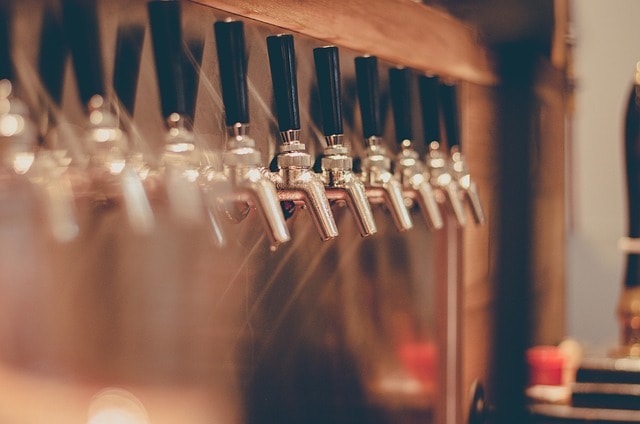How to Change a Keg Effortlessly

It's important to know how to change a keg. Knowing this basic skill will allow you to serve beer with minimal effort, which is always a good thing! In this post, we will talk about how to change a keg correctly and the steps involved. First, make sure that the old keg has been completely emptied. This is important because you don't want to leave beer in a keg that could have been sold. Now let's move on to disconnecting a keg.
How to Disconnect an Empty Keg
Once the old keg is empty. Untap the keg by disengaging the handle. Turn the keg coupler counterclockwise. If it's a D-Sankey. The coupler should release from the keg. Move the old keg out of the way and grab your new keg.
If you are using a Euro Sankey. You will have to either untap the keg and slide it back like imports. Certain wine couplers might need a little wiggle after they are untapped. It just depends on the keg coupler and the keg being used.
If you want a list of other keg couplers check this list out.
By following these steps. Un tapping a keg will be easy.
Changing The Keg
Before you can start enjoying your new keg of beer, you'll need to connect it to the tap. This process is relatively simple, but there are a few things to keep in mind. First, make sure that the keg is properly chilled. If it's too warm you won't be able to pour any beer. You'll just pour a lot of foam and waste your beer. Here's a quick checklist to connect your new keg:
- Untap the empty keg.
- Place the new, full keg in its place.
- Turn the coupler clockwise until it stops into place on the keg. You don't have to force it in there either. Just turn it until it stops. You'll feel it stop.
- Open the valve on the CO2 tank and allow gas to flow into the new keg. If the gas was turned off at the cylinder
- Check for leaks by opening the tap on the keg and allowing beer to flow out for a few seconds. If there are no leaks, your new keg is ready to serve! Enjoy!
Setting The Right Pressure On The Keg
First, you'll need to pressurize the new keg. This can be done by attaching the gas line to the keg and then turning on the gas. Next, on the secondary regulator check to see that the gas pressure is set from 12-14 psi if you are using straight Co2. If you are using a blended gas. Your pressure should be set somewhere between 20-25 psi. The blended gas I'm talking about is a 70/30 mix Co2 to Nitrogen.
Tips for keeping your Keg cold
There's nothing worse than a warm beer, so if you want to keep your brews icy cold, there are a few things you can do. First, make sure your walk-in beer cooler is set to the correct temperature - around 38 degrees Fahrenheit is ideal. Secondly, avoid placing your beer near the door of the fridge, as this is where warmer air can seep in. Thirdly, invest in a good quality beer cooler or fridge for storing your beer. Finally, remember that dark beers will stay colder longer than light beers, so if you're looking to keep your beer really freezing, opt for a darker variety. By following these tips, you can enjoy frost
Keg Maintenance
Keg maintenance is essential for any business that serves draft beer. Dirty kegs can cause a variety of problems, including off-flavors in the beer, reduced carbonation, and spoiled beer. Additionally, dirty kegs can be a breeding ground for bacteria. For these reasons, it is important to clean and sanitize kegs on a regular basis. The frequency of cleaning will depend on how often the kegs are used. But as a general rule, they should be cleaned after their use at a retailer when returned to the brewery to get filled. Keg couplers should be scrubbed every 2 weeks with bi-monthly beer system cleaning. This helps prevent yeast, mold and bacteria from spoiling the beer in the keg. Changing a Keg and Maintaining it is an essential part of any business that serves draft beer. By following the tips in this blog post. You'll be able to change kegs effortlessly and maintain keg quality. Ensuring customers always have a great beer to enjoy. If you have any further questions you can always reach out to us here.



